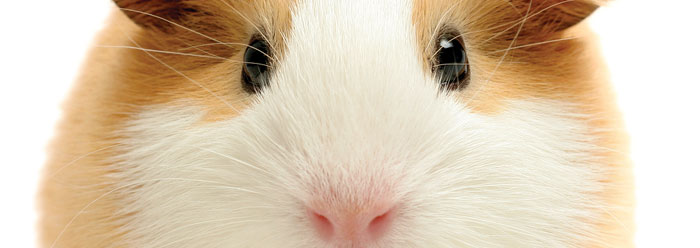As if living creatures don’t display enough variety in God’s creation, fossil forms bring that diversity to a whole new level. Consider the fossil skull of a guinea pig from Uruguay so big the living rodent might have weighed 2,000 pounds!1 Size estimates vary, but any rodent even close to a buffalo’s bulk attracts attention. Surprisingly, its largest modern relatives only reach about knee high, and the common guinea pig pets are no bigger than a rabbit. Why don’t we see buffalo-sized guinea pigs today? Examining the history of five other humongous or fearsome creatures may help answer this question.
Humans have removed the threat of large cats from most wilds, even making tigers an endangered species. Perhaps the most fearsome-looking ones were the saber-toothed cats. Some of them approached the mass of Hercules, a 920-pound liger (offspring of a male lion and a tigress). Considering how people continue to eradicate large, threatening cats like tigers and lions, surely the even larger saber-toothed cats were equally unwelcome in ancient neighborhoods, which was no doubt a factor in their eventual disappearance.2
At 13 feet tall, mammoths are widely regarded as the largest representative of the elephant kind. Ice Age evidence, such as cave paintings showing armed warriors surrounding mammoths, confirms mankind once hunted them—perhaps to extinction. We see modern examples of this today, since elephants in Asia gruesomely kill hundreds of people every year, prompting humans to hunt them in defense.3
Ice Age cave bears no longer inhabit Siberia or Europe, where only their fossils remain. Their bones show they had a bit more muscle than the largest of today’s grizzly bears. Occasionally, spear points and human bones are found alongside cave bear bones, reflecting ancient conflict. Bears that attack people nowadays are typically dispatched immediately; similar human responses may have eradicated cave bears.
Fossils show the dire wolf was one of the heaviest canines ever. Why don’t we see dire wolves today? Historical records show that American settlers rapidly wiped out gray wolf populations across the United States.4 They left stories of wolf-eaten livestock, leading us to suspect that ancient locals may have given the equally threatening dire wolves the same kind of treatment.
The fifth and final creatures were the largest ever—dinosaurs. Because Genesis specified two of every land creature boarded Noah’s Ark, we know two of every dinosaur kind must have escaped the great Flood. So what could have caused dinosaurs’ post-Flood decline? Similar to the fate of other humongous or threatening creatures, history indicates human hunting likely aided dinosaur extinction as well. For example, a new book titled Amazon Expedition shows an ancient South American cave drawing of armed men surrounding a dinosaur.5 Other human artwork and written records reflect dragon legends that detail slayings and honor the slayers’ names. If some dragons were actually dinosaurs, then legends of their demise fit what history has shown: Whenever men move into a geographic area, they remove the large threatening animals as well as the large edible ones.
Like our five other fearsome creatures, the one-ton guinea pigs may have been perceived as dangerous threats, or they might have just been targeted as food for hungry villagers. Either way, if recent and ancient history supplies any clues, it’s a good bet that humans had something to do with their disappearance.6
References
- Cox, P. G., A. Rinderknecht, and R. E. Blanco. 2015. Predicting bite force and cranial biomechanics in the largest fossil rodent using finite element analysis. Journal of Anatomy. 226 (3): 215-223.
- Catchpoole, D. 2015. Enraged elephants, terrifying tigers, and dangerous dinosaurs. Creation. 37 (1): 34-37.
- Attacks by wild Asian elephants. Fact sheet. Posted on factsanddetails.com, accessed February 9, 2015.
- Dobie, J. F. 1961. The Voice of the Coyote. Lincoln, NE: Bison Books, 44.
- Nelson, V. 2015. Amazon Expedition. Red Deer, AB: Untold Secrets of Planet Earth Press, 25.
- Abrupt climate changes at the close of the Ice Age also challenged large animals. See Oard, M. 2008. How did 90% of large Australian Ice Age animals go extinct? Journal of Creation. 22 (1): 17-19.
* Mr. Thomas is Science Writer at the Institute for Creation Research.














